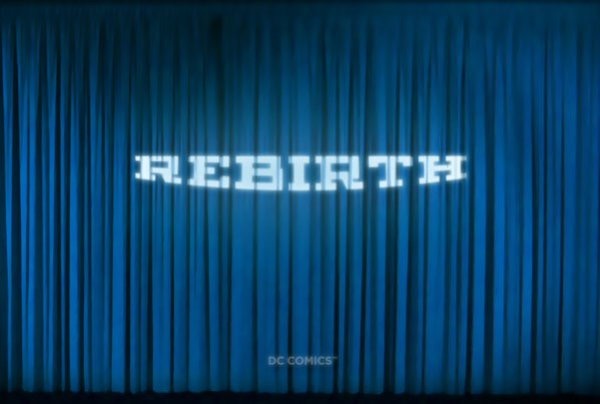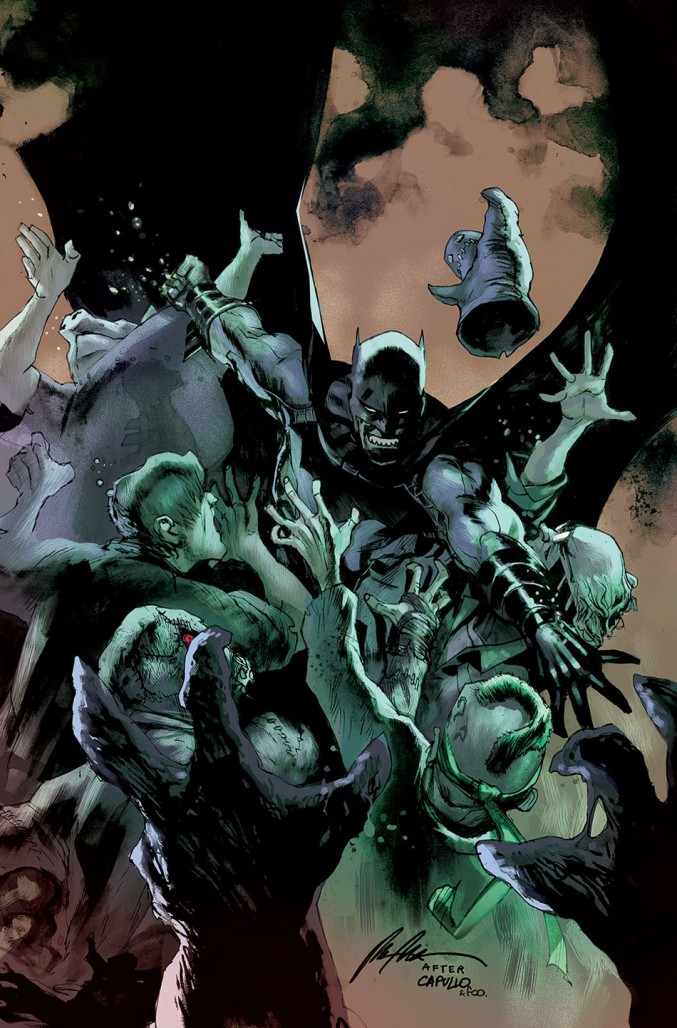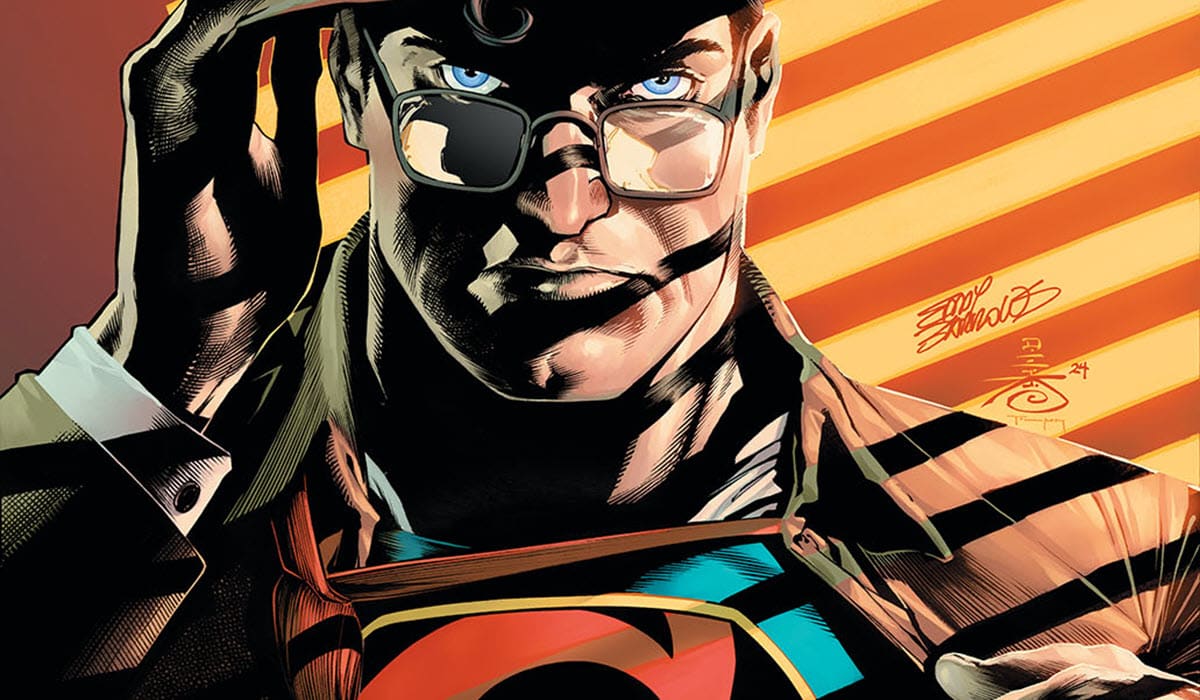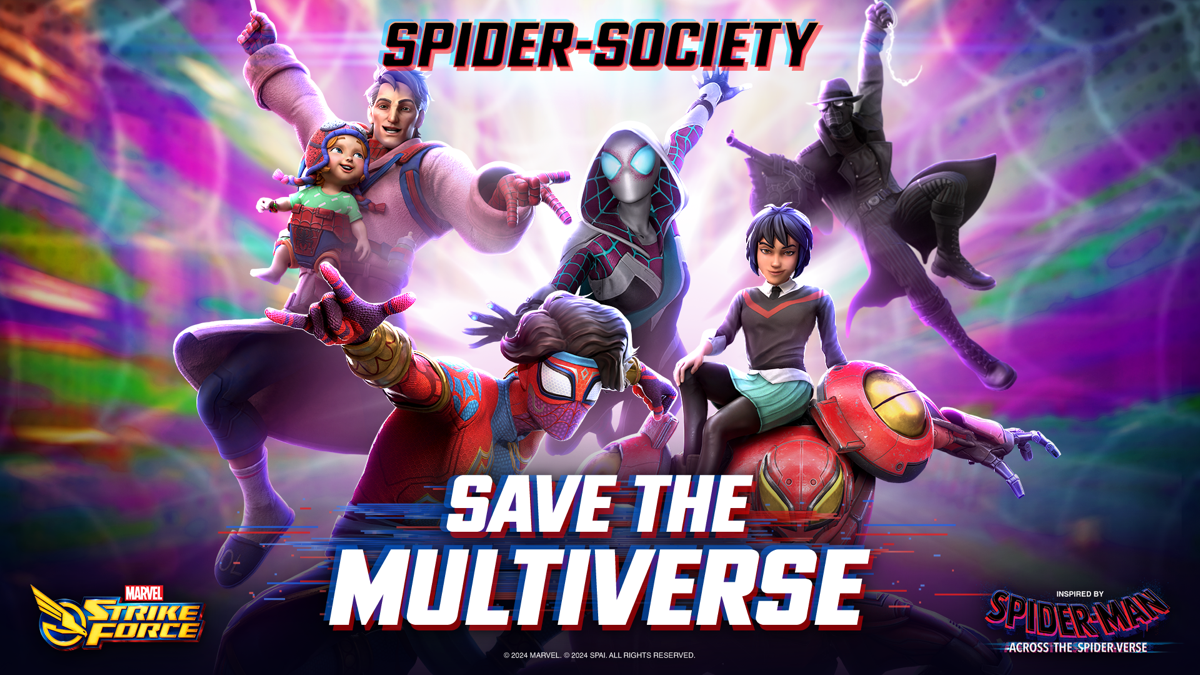It’s been quite a while since the last edition of The Retailer’s View, and there are several reasons for that. Almost all of them can be grouped under the heading “year one of a business is tricky as hell”, though a bit can be attributed to the emotional drop I encountered at the end of last year, and the beginning of this one. Dealing with all the stresses of starting a business is one thing, but trying to power through your days when there’s a vice gripping your heart and guts can be a little much – especially when the structure isn’t there for you to be able to take more than a day off to reassess and regroup and push onwards.
Things with the business are going well – or as well as a business can go within the first year. We’ve gotten to the point where we’re posting a profit each month, and seeing a trend of sustainable growth form – this is spite of the economy on Alberta going having gone sideways pretty hard. While I haven’t done any deep research on other territories (again, the time constraints of a first year business) up here in Alberta, we’re dealing with the effects of low oil prices on an economy that was built to be over-reliant on that particular resource. What’s resulted is a sagging job market for those working within the oil industry, which has trickled ever outwards to other businesses.
As an added bonus, the low cost of oil has had quite the effect on the worth of the Canadian dollar, which means that when we bring in product from Diamond, we are paying over 40 cents on the dollar – so those $3.99 comics are more like $5.60 for Canadian fans, and $4.99 are closer to $6.99. (Though people who have a regular pull list do get a discount, plug plug.) Those factors at play mean we have to be very, very careful with what we bring in. Thankfully, my previous years of comic retail experience have taught me what to watch out for in terms of customer interest and order levels, and things have gone quite well. If we were a larger shop several years into its existence, or if we had built our business on premium purchases like variant covers and high end collectibles, we’d probably be facing quite a few more hard decisions, but that’s not the case. Things are working, but it’s stressful.
Adding to that stress? An impending storm at one of the bigger publishers – something talked about in loud stage whispers amoung those who frequent comic book news and rumour sites: DC’s Rebirth.
A recap of unconfirmed events for those who have not been keeping score: near the end of last year, and the opening weeks of this one, word started spreading about a potential shake-up within the DC line. At first, there was talk of many of DC’s stronger titles moving towards a twice-monthly shipping schedule, which ended up being confirmed by sources within the company – though to this date, there hasn’t been a list of titles made public, nor if the twice-monthly schedule would be intermittent (like at Marvel), or a full-press 24 issues a year schedule.
Then, there came talk of the entire main line of ongoings coming to an abrupt stop in the new year, with a slate of new #1s heralding another new era. Some said this was because the company had been upset by how poorly the recent soft DC You launch had done this past June, which is plausible. I maintain that the bulk of the titles in the DC You launch were exactly what the company needed to help diversify their line, but produced and marketed at the exact wrong time to have any kind of positive impact. Retailers and customers had just been burned by two months of Convergence, which sold well enough on the charts, but not so much off the shelves. What didn’t help was the fact that the content Convergence was built upon was fairly regressive, looking ever backwards before the line would take a chance leaping forwards. The result was a retailer base once bitten, and a customer base that wasn’t prepared for the shift to come (partially because retailers had lighter stock of a lot of the soft launches). That’s certainly a long way to say “sales were bad, and DC saw the need to do something”, but the context is important.
Lately, when DC gets into these situations, they become reactionary to a fault, focusing too hard on a short term picture to spite it’s long term goals. Take Convergence for example. Those two months of stories were produced to help the office and creative teams on regular books deal with a seismic shift in DC’s structure, both in a physical capacity, and in a editorial sense. The reaction was to try and look back at eras that were particularly strong for the company in terms of sales, because that would be a nice, safe, “easy money” option – but “easy money” doesn’t build for the future. To go back to the beginning of this article, that’s why we didn’t build the shop on premium purchases – because doing so doesn’t account for what’s to come next.
I’m more than a little afraid that DC’s big Rebirth announcement will be born more from a place of panic than laying the foundations down for a better tomorrow. The confirmation of twice-monthly shipping is a bit of a tip off for that. While I can’t argue with the financial boon having Batman shipping twice a month would provide, I can argue that doing so does more long-term harm than it provides short-term gain. All one has to do is take a look at Marvel’s current publishing line to see the effects of this publishing practice. While having your flagship Avengers title ship twice a month ensures a certain sales level that books like, say Vision won’t ever hope to hit in a million years, it also softens the highs that a book like Avengers can have. People are often more shy about taking a chance on a book that will cost them $8 a month (or $11.20 Canadian) to keep up with, which shaves down the audience. In addition to that, retailers are a little more gun-shy about ordering above and beyond for books that routinely circumvent the Final Order Cut-Off process. Currently, if a book ships monthly, you’ll usually have at least 4-11 days worth of sales data before you have to finalize your numbers for the next issue. Shipping twice a month means that orders for issue #3 will be due around the time numbers for issue #1 are finally rolling in – and armed with zero sales information for issue #2, most retailers will play it safe and keep things tight on the shelf. So yes, sales would be fairly stable, but there would be no chance to grab new readers, which is what DC so desperately needs to do at this point.
What adds to my anxiety is the persistent rumour that DC will be attempting to focus more inward on a more homogenous style once more after seeing their comparatively daring DC You line up do very little to shift the sales dial. There are a myriad of flaws contained within this kind of thinking, starting with what I’ve already said about the Convergence effect, and pushing through to the fact that homogeny was what brought them to the sales hole in the first place. Over an extended period of time, DC let titles that attempted something new and daring float away, replacing them with more single minded projects instead of branching out once more. They’ve been consistently looking backwards, replacing many new faces to their writers stable with writers from eras gone by, plying their storytelling wares that just don’t match the aesthetics of the current market. If DC wants to come out as a strong and relevant voice for the people who are buying comics today and tomorrow, they need to stop retreating and bravely push forward.
Note: this should not happen all at once (another problem with the DC You launch), but over an extended period of time. There needs to be slow, sustainable experimentation that builds a foundation for the future, but I doubt that’s going to happen. Because one of the biggest rumours regarding Rebirth is – of course – the line wide renumbering effort. If true, and DC relaunches their entire line up in one big mass, they are going to end up in trouble again sooner rather than later. A mass relaunch would once again be looking backwards, attempting to capitalize on the magic that turned The New 52 into a sales juggernaut for that first year or so. The problem with this would be two-fold. First? This type of sequel has about a 99% chance of doing a fraction of what The New 52 did – because you only get to pull that trick once and have it work effectively. Again, see the Marvel line-up for the cautionary tale of diminishing returns. Second? It’s another short-term money solution, and one that will play to the homogenous mindset that DC seems to be currently mired in. Take a look back to The New 52. Of the books that are still around today, how many of them are fresh concepts, or lesser known characters? New ideas and takes are vital for the continuation of the medium, but the flip-side to that is the fact that new ideas need more space to breathe and catch fire than, say, a new Batman title. Batman will always sell. Always. It will do so with little to no marketing or story quality, because it is Batman. If DC attempts to push forward with some new ideas in the midst of an all-at-once launch, they will return right back to square one within two years – and that’s being generous.
Now I don’t like criticizing with offering potential solutions. It’s very easy to point and talk about what’s going wrong, but that’s not additive. So if anyone out there is willing to listen, here’s my ideal in regards to a DC relaunch, whether that’s actually in the planning, or not. (It is.)
Month One: Contrary to what I stated above, they’ll need to double ship some titles. Back peddling? Absolutely, but my version involves some long term thinking. You hit month one with a small heap of your staples. Not all of them, mind you, but 50% of them or so to punch hard and fast right off the bat. Batman, Superman and Wonder Woman are an absolute must, because if things go well, those character just had millions of eyes on them, and people will be champing at the bit for more. Give them more, and build that foundation. Fill the rest of the initial line up with things you should absolutely have given their current profile, like Suicide Squad, Supergirl, Green Arrow, and Flash. Probably make sure you have the Justice League book in fighting shape, if Geoff Johns’ schedule allows (only because I doubt Johns is leaving that book anytime soon) – but make sure it starts off with a nice, easy to digest adventure instead of a big complicated “Next Big Thing”. None of these books, whether the continuity is continuing or not, should be built from a place of knowledge of what’s come before. That would be absolute death for getting more readers, which is the whole point.
For your big flagship books like Batman, and Superman, double ship for the first… month. Maybe two. MAYBE. If the book is incredibly, creatively strong. Over print your second issues, and make sure they are available. Maybe do a program like Marvel did for Vision and Red Wolf, where they just match your second issue orders to what you did for issue one at no cost on all double shipping books. Obviously don’t tell retailers you’ll do that before hand, or else they’ll just zero out their orders and have you pay for the rest like a chump. Or maybe do a consignment thing. Whatever. Regardless, double ship books with strong sales for the first month or two, not for cash grab purposes, but so that you can plug in publication slots in your budget. I’m not going to pretend to know what DC budgets for titles released, but I do know that companies of their ilk do have quotas that they need to hit, and hypothetically, they’ll need to have something like 50 main-line comics come out in one month. If they can do this by double shipping, say 15-20 books, that means they can slowly pull back on that publishing schedule, and do a gradual launch for titles that might need extra attention from marketing or just from an “available funds to check out new books” stance from retailers and readers alike. A bit of short term gain, with a long-term view.
Oh, and in those big #1s? Do what you attempted to do with Convergence, and include previews of upcoming new concepts in the back of like-minded titles. But unlike Convergence, try to actually preview books before their final order cut off, and pair them up a bit better. Give a big launching panel for a title that deserves the attention, and have retailers and fans get excited for it before orders are due. Simple, yes?
Month Two-Three: As stated above, pull back on the double shipping, and filter in the new concepts and new takes. Launch a few more of the sure-fires to ride the buzz. This is also where I’d relaunch Detective Comics and Action Comics with blockbuster creative teams at the helm. Give those books a month off. Old fans will lose their god damn minds, and new fans won’t care, so whatever. When they come back, have Scott Synder rocking Detective like the rumours say, but make that book $3.99-$4.99 (depending on whether or not you’re going full Marvel – ask the number crunchers) and make that book 40 pages of content a month. 20 of Snyder and whoever, and 20 of Bat-family anthology style stories. Bring in big names that could never hit a monthly schedule and schedule 10-page stories as they’re completed. Fill the rest with exciting new voices found and fostered from all around the comic book industry. Do new and exciting things, and if something piques the public’s interest, go crazy. You can get away with this, because the people will pay whatever the hell you ask for Scott Snyder Batman comics, and you’ll be monetizing the discovery of new voices that might click with an established or new audience. I’m not sure who I’d get to anchor Action Comics, but to make the anthology format work, it’d have to be some heavy hitting people.
Other Recommendations: Stop looking backwards. Stop hiring old writers, unless they have something genuinely new and refreshing to say. If you look at a pitch and can replace the main character with Batman, then why isn’t it a Batman book? Be unique, and say something unique. Offer choices, and not a single choice. Be brave enough to try, and courageous enough to stick continue to try, because it just gets worse if you retreat again, and then what are you going to do? You’re running out of room to retreat, and the industry is getting tight enough that it won’t suffer fools for much longer.
What Will Probably Happen: Justice League #52 will officially end the era on the week that all the new titles come out – again, schedule permitting. 80% of the new titles will launch in the first month in a giant hodgepodge of similar story styles, with a line-up of already well established DC creators at the helm (with a couple of “we can probably tell them what to do because they’re green to superhero books” creators thrown in for good measure). More of the same, resulting in the same problems, in a shorter time span. This is not what I want, but it’s probably what I’ll get. At least in that case, I’ll already know what to order, as the line will not have changed a whole lot, and it won’t be hard to peg the books to spend (or not spend) money on.
Anyway. Your move, DC. Let’s see what you’ve got.
[Brandon Schatz is an owner of Variant Edition in Edmonton, Alberta and has spent the past nine years working behind the comic book counter. In his spare time, he writes about the comics and culture. You can find him on twitter @soupytoasterson and at his website, Submetropolitan. The opinions expressed are those of Schatz and do not necessarily reflect those of The Beat.]











A naive question:
What if a publisher launched a new title every month, instead of one big blast?
The publisher concentrates on promoting the new title, while maintaining some buzz from last month’s launch.
I don’t think that would be a sustainable model for the big two. Heck, Boom! does roughly 2-3 a month at a minimum. I honestly do like Marvel’s method – a cycle of “seasons”, like television, before tapering off, but they need to figure out a way to space out the end of one series and the start of the next to create a gap where people are champing at the bit to get what’s next.
I’ve pondered Torsten’s question too. Not necessarily for a big relaunch but for after that. In any given month, there must surely be a title that is worthy of cancellation and they could always have something on deck.
I know why they don’t – promotional dollars are more effective to use to sell multiple series rather than just one – but still, the most interesting thing about the solicits (to me anyway) is what is being cancelled and what new book(s) are coming out. I wouldn’t mind having that be something I could see every month.
@Torsten – this is without knowing the economics of the publishers, but it seems like the companies, at this point, have adapted to selling a few copies of a lot of books, and have allocated resources for staffing to meet that demand. If you staggered relaunches, I presume you’d run into the problem of having a lot of superfluous staff that you’re paying salary/benefits/etc for who are now suddenly doing a lot less work. Granted I’d be in favor of drastically reducing the number of titles published at both Marvel and DC, but I can see why if you’re Dan Didio, you’re not keen to suddenly have a bunch of workers sitting around or, on the flip side, to fire a bunch of people you probably rather like.
‘I maintain that the bulk of the titles in the DC You launch were exactly what the company needed to help diversify their line, but produced and marketed at the exact wrong time to have any kind of positive impact. ‘
Gotta love it , the hip internet crowd for years have been saying books arent selling due to lack of diversity, when they’re given diverse books and they flop they come up with all sorts of excuses.
I think a lot of your ideas for the relaunch is spot-on. But, like yourself, I doubt they will happen.
And what’s with Vertigo? The numbers for their last “offensive” have been depressingly low (and in most cases rightly so). So is the idea of having a non-superhero-line quasi-dead soon?
Well davebean, I’d actually give a good hard look at the wider industry and the kinds of books that are having success there. DC is woefully behind the curve on diversifying their line, and stumbled out of the gate with a myriad of poor marketing practices. It’s hard to succeed when you’re so hell bent on putting more bullets into your foot, even if you have the best of intensions.
I really loved Marvels double shipping policy in the 80’s (maybe only one or two years?), they double shipped the top titles in the summer. I was thrilled, but not burnt out, and I really anticipated it, since it was fun to read X-Men outside on a sunny day.
@davebean – I worry that you’re mixing correlation with causation. Here’s a question to ask yourself: are other publishers making efforts to produce a more diverse selection of material? If so, are their sales dropping like DC’s sales are? If not, you may need to look at a lurking variable to determine what *did* cause the drop.
In the case of comic book sales, which are dependent on retailers having the confidence to order your product, can you wager a guess at why retailers wouldn’t have much confidence in the publisher? I think Brandon addresses that question quite well, regardless of how much you liked the answer.
Comments are closed.